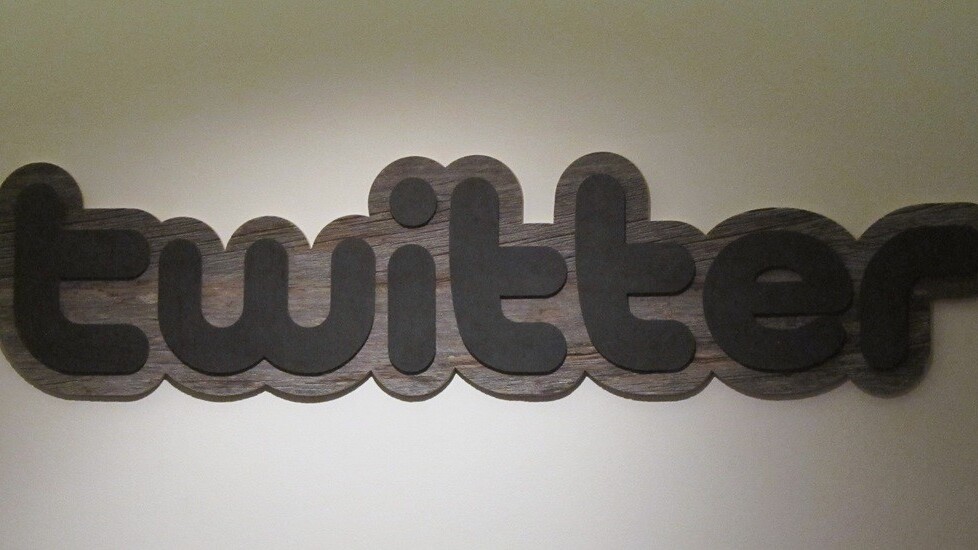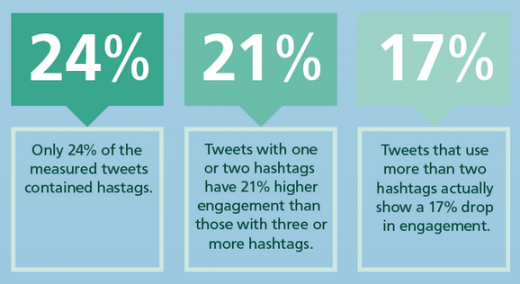
This post was originally published on the Buffer blog.
Since social media is changing so often, it can be hard to keep up with stats and trends that affect how you use it. I quite often forget the facts that I’ve read, or I use Twitter based on stats that are outdated now.
In fact, when I recently looked at some of the latest social media statistics, it hit me that the fastest growing demographic on Twitter is is the 55–64 year age bracket. And that’s just the tip of the iceberg in terms of what’s changed.
In case you’re in the same boat with me, I gathered up some really interesting Twitter stats that can help you improve the way you reach your followers. Especially when trying to gear up for the new social media for business, being in the know of the latest stats is more valuable than ever.
1. Twitter engagement for brands is 17 percent higher on weekends
I guess not many people know about this one, because only 19 percent of brands tweet on the weekends. If you’re trying to encourage your followers to engage with you on Twitter but you don’t want to work over the weekend, you could use Buffer to schedule tweets to be sent while you’re having a sleep-in.
Social media scientist Dan Zarrella also found in one of his Twitter experiments that click-through rates were higher on Fridays, Saturdays and Sundays.
2. Tweets with image links get 2x the engagement rate of those without
Just like on Facebook, photos are more engaging for Twitter users.
Here’s how you can Buffer images right from the Web.

3. Tweets with less than 100 characters get 17 percent more engagement
This is another stat that was similar for Facebook. Shorter posts tend to garner more engagement on both platforms.
If you’re posting tweets with links, Dan Zarrella’s research shows that 120–130 characters will be your sweet spot.
4. Twitter’s fastest growing demographic is 55–64 year-olds
If you’re looking at growing your audience, you might want to look at new Twitter users, which are most likely in the older age brackets. As Twitter’s user base grows, you’ll have a wider variety of users to target, supposing they’re all part of your market.
This largely overlaps with the general Social Media statistics, Social Media definitely working its way up the age demographic.
5. Tweets with hashtags get 2x more engagement
Having said that, keep the hashtags to a minimum. One or two will get you 21 percent more engagement than if you add 3 or more. This could be because hashtags often connect a tweet to a particular topic or Twitter chat that others are following or interested in. Keep appropriate hashtags in mind when posting, especially if engagement is something you’re looking to improve.
It’s especially interesting to look at the history of the Twitter hashtag. The rise of the power of the hashtag is no surprise as a result.
6. 66 percent of user-generated tweets that mention brands come from mobile users
There are a few things to keep in mind when targeting mobile users. Ensuring that you link to mobile-friendly sites is a good start. Linking to Twitter usernames of people you mention and adding hashtags can also be helpful for mobile users, who might want to find out more without opening new browser windows or searching in their Twitter client.
So being equipped with a great social media publishing tool for mobile is now more important than ever. It’ll be interesting how the shift to mobile will become even more obvious in the coming months and years.
7. Twitter users who mostly use a mobile device are 181 percent more likely to be on Twitter during their commute
When you’re tweeting, think about where your audience is, and what they might be doing. If it’s early in the morning, they might be commuting to the office—this is actually a great time to get them, as they’re probably bored and looking for something interesting to occupy them during this time.
These users are also 119 percent more likely to use Twitter during work or school hours, so don’t write off these times as being no good for tweeting—at least until you try them. Dinner time, on the other hand, is probably not the best time to catch your followers, as you can see in the image below.
Here are also more insights on how to make the most of Twitter on your mobile phone.
8. Amplifiers are 122 percent more likely to send direct messages
A study by Twitter itself found that amplifiers—that is, users who are more likely to retweet than others, thus amplifying content—are more likely to send direct messages as well. Plus, 90 percent of them tweet about TV shows.
This points to the important fact that these users see Twitter as a way to communicate with close friends or family—hence the use of the private option of direct messages—and to talk about their habits and daily activities, such as watching TV.
Especially with the recent changes being made to DM’s, there seems to be a lot more to come for marketers.
9. Your tweets have a 12x higher chance of being retweeted if you ask, and 23x higher if you actually spell out the word “retweet”
This is a really interesting one. I’d heard before that asking for a retweet is the best way to get one, but in fact, spelling out the word “retweet” as opposed to using the abbreviation “RT” gives a much higher chance of being retweeted—23x higher than average! That’s not a hard one to implement, either.
10. Tweets that include links are 86 percent more likely to be retweeted
Like photos, links appeal to Twitter users. Links, however, are more likely to increase your number of retweets than engagement rate. This is helpful to keep in mind, as you might want to broaden your reach (get more retweets) rather than engage your current followers (increase engagement with photos).
Conclusion: Where to go from here
The latest changes to Twitter’s statistics suggest a clear change to what lies ahead for Twitter’s future.
Where to go from here, is the obvious next question. To harness the power of Twitter’s new changes, you might want to take a look at “A scientific guide to posting Tweets, Facebook posts, Emails and Blog posts at the best time“, which is a great resources to get more out of Twitter.
For more advanced Twitter users, the guide to “A scientific guide to writing great headlines on Twitter, Facebook and your Blog” might also be a great place to start.
What are your best tips for kicking things into a higher gear on Twitter? We’d love your comments and thoughts on this in the comments below.
Get the TNW newsletter
Get the most important tech news in your inbox each week.











